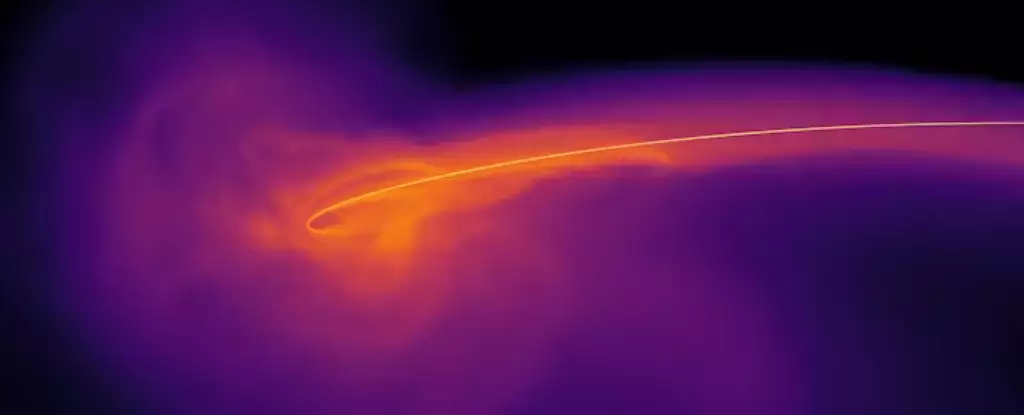Giant black holes at the heart of galaxies have a reputation for consuming stars that wander too close. This process, known as a tidal disruption event, involves the star being stretched and torn apart as it approaches the supermassive black hole. However, recent observations have revealed some unexpected details about these events that challenge conventional theories.
Contrary to expectations based on theoretical predictions by astronomers like Martin Rees, the glowing debris resulting from tidal disruption events has been found to emit visible light rather than X-rays. The observed temperatures of the debris are significantly lower than anticipated, resembling the surface of a moderately warm star rather than the expected millions of degrees associated with a black hole’s accretion disk.
Further complicating the puzzle is the size of the glowing material around the black hole, which is several times larger than our Solar System and expanding rapidly. This unexpected size and behavior of the debris have left astrophysicists scratching their heads, questioning the mechanisms underlying these phenomena.
A groundbreaking study, recently published in The Astrophysical Journal Letters, offers new insights into tidal disruption events through advanced simulations. By employing innovative simulation techniques that incorporate Einstein’s general theory of relativity, researchers have been able to unravel the mystery surrounding the behavior of stars being devoured by black holes.
Simulating tidal disruption events is a complex task, requiring sophisticated computational models that factor in the extreme gravitational forces near supermassive black holes. The newly developed simulation method allowed researchers to follow the entire process from the moment a star is shredded by the black hole to the formation of a sprawling outflow of debris.
The simulations revealed that only a small fraction of the star’s mass actually gets consumed by the black hole, leading to the generation of intense heat and an impressive outflow of material. This outflow, akin to a “cosmic burp,” is responsible for the expansion of the glowing debris away from the black hole, explaining the observed solar-system-sized structures.
The findings from the simulations shed light on why tidal disruption events exhibit peculiar characteristics, such as the expansion of glowing debris at a significant fraction of the speed of light. By demonstrating how material smothering the black hole contributes to the observed phenomena, the study provides a new perspective on the nature of these cosmic events.
The new simulations offer a comprehensive explanation for the behaviors observed during tidal disruption events, unveiling the role of black holes as powerful engines that influence the surrounding material. The concept of a “black hole sun” emerges from these findings, highlighting the intricate relationship between supermassive black holes and the cosmic phenomena they induce.


Leave a Reply